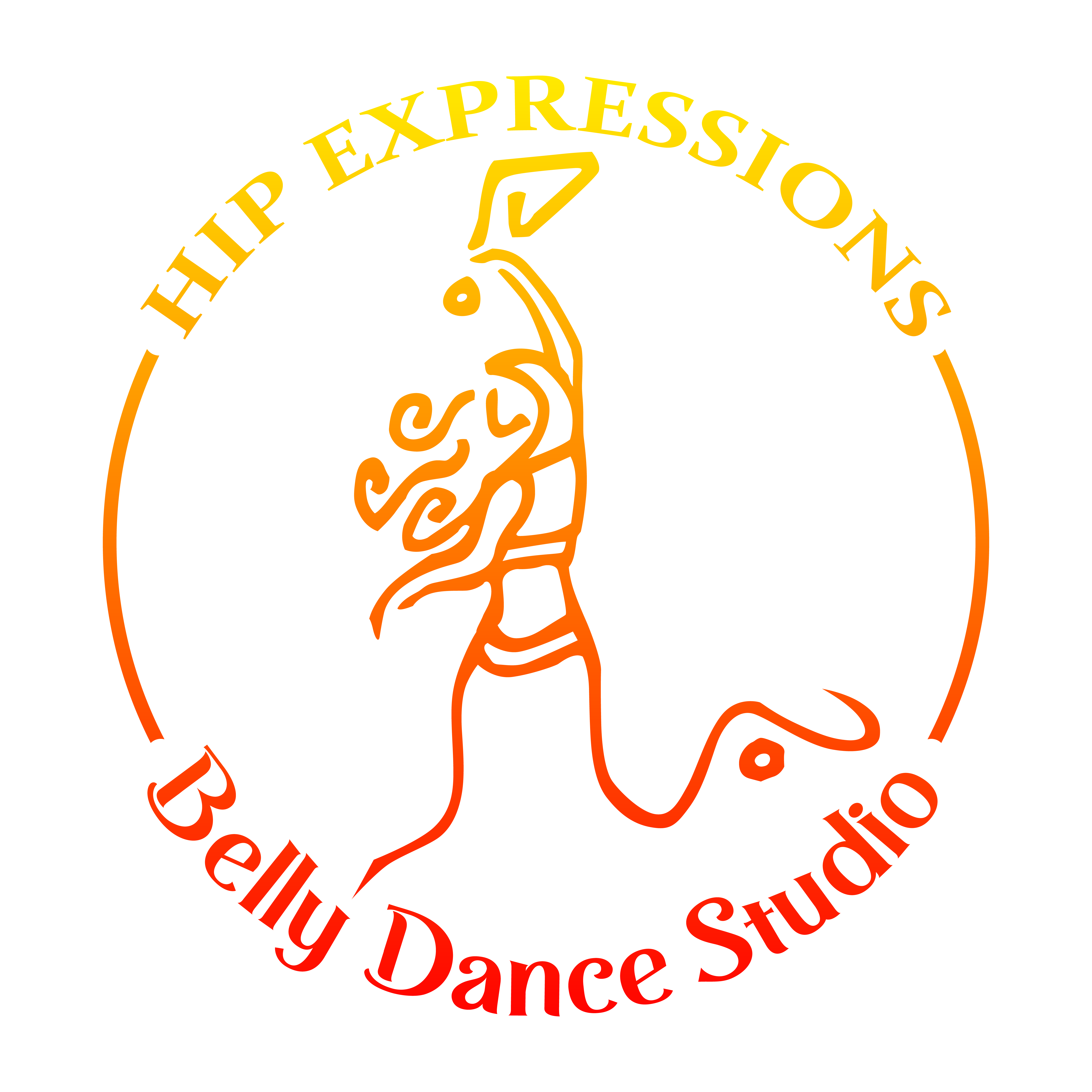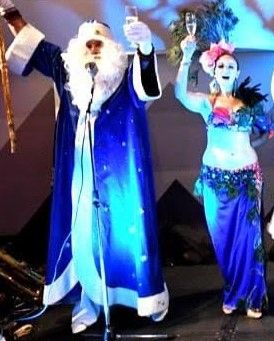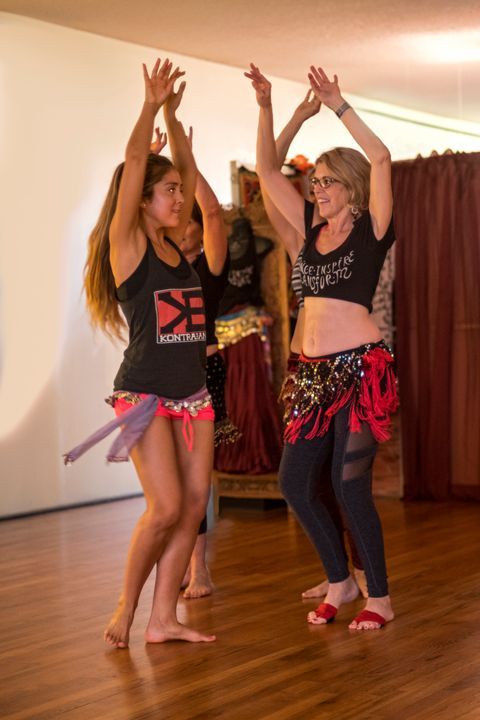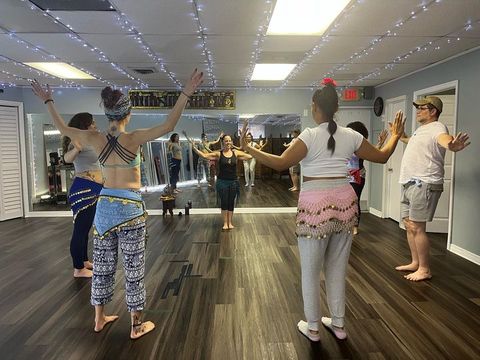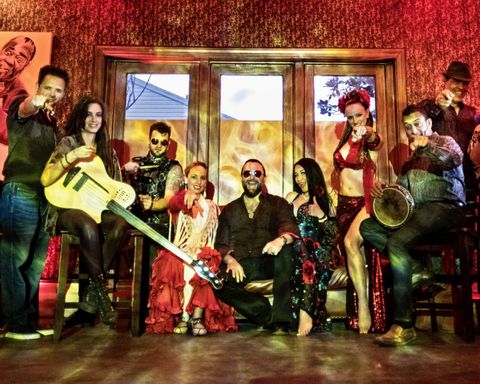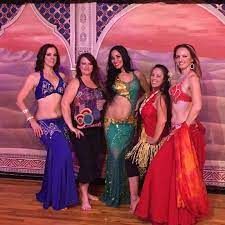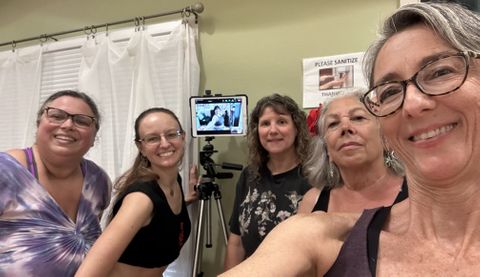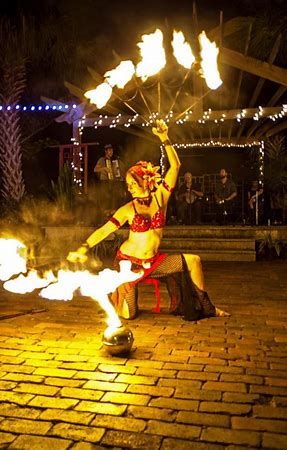Blog
...pay attention to the magic behind the curtain...
We live, breath, love, in the intriguing world of inspirational movement and music from around the world... staff writer Shana is here to give you a 'behind the scenes' look! Enjoy the passion, breadth, and variety of what inspires us; perhaps it will inspire you, too!
Turkey for Christmas
Shana Smith
Question: What do belly dancing, Santa Claus, and Christmas dinner all have in common? Answer: Turkey! The country that is, not the bird, though the fact that eating turkey for Christmas is a global tradition, even in the country of Türkiye (traditional spelling). The country of Turkey also boasts a form of belly dance that is distinctive from its Egyptian and Lebanese counterparts, although many belly dancers today perform a fusion of the styles. If you’ve seen dancers play the zils (finger cymbals), drop to their knees and extend into a full backbend, or wear bead- or coin-adorned costumes that reveal lots of torso and leg, you can thank the influence of the Turkish form. While the trademark shimmy is an Egyptian style, Turkish belly dancing--also known as ciftetelli--is more flamboyant and energetic, with hair tosses, hip gyrations, hip lifts, kicks, twirls, and leaps not withheld. Another unique Turkish contribution to the global belly dance we enjoy today is the karshilama, or 9/8 time folk dance that is often incorporated into popular routines. Also, while all forms of belly dance are open to men and women alike, Turkish belly dance has historically featured the most male dancers.
moreStarting a Movement
Shana Smith
In today’s society, the standards we are bombarded with can seem impossibly high. One hour of television or internet consumption will yield an average of twenty-three minutes of advertisements that show attractive, healthy, young, slim people living their best lives with seemingly minimal effort. This model contrasts the reality of any given day in the ordinary adult in America, when the sound of the alarm (often after too little or low-quality sleep) can begin the first of a series of physical, mental, and emotional challenges that, while very valid and a normal part of the human route, create the illusion that “everyone has it all together except for me.” The result can be a “why bother?” attitude: when the rest of the world appears to be happily running a metaphorical (or actual) marathon, it’s hard to even get out of bed. America has thus become the land of the sedentary, home of the couch potato, substrate of the barely-making it, and island of the lone wolf, with many suffering from unspoken feelings of disconnection and loneliness.
There is a simple solution, and it doesn’t involve setting rigid parameters designed to achieve unrealistic standards. It’s called MOVING. Like the old adage, “the journey of one thousand miles begins with a single step,” we can start plugging into health and happiness immediately by simply by moving our bodies. Feeling blue? Move! Tired? Move! Achey? Move! Ate too much stuffing for Thanksgiving? Move! Got an overwhelming to-do list? Move! A marathon is not required. As my mother always says: “Life is a cinch by the inch, but hard by the yard.” Harvard Health advises us that most Americans spend at least half of their days sitting, which is a primary cause for chronic inflammation and the many diseases that stem from it, as well as obesity and depression. By contrast, regular bouts of movement throughout each day such as a short walk, stretching, dancing, and other simple and accessible movements have immediate physiological and mental benefits, to wit: increasing heart health and circulation, elevating mood, moving lymphatic fluid, building bone mass, increasing sex drive, lowering cholesterol and blood pressure, increasing energy, and promoting better sleep, to name just a few.
moreBelly Dancing is for Every Body
Shana Smith
“Belly dancing is the way for the body to smile.” –Soheir Zaki, late 1960’s
Just as there is no single face type required for a dazzling smile, neither is there a specific body type required for the timeless art of belly dancing. Nonetheless, many people admire the art of oriental (belly) dance from afar, never actually thinking that could be accessible to or for them. The reasons are many: “I’m too skinny.” “I’m overweight.” “I’m not pretty enough.” “I would be too self-conscious wearing those costumes in public.” “I can’t keep a beat, no less shake my hips to one.” “I could never be as good as the dancers I see on stage.” “I’m too old.” “I’m not graceful.” The list continues. This tendency can be even more amplified in men, who may mistakenly believe that the beauty of this art form is reserved for women only, and that societal conditioning requires them to keep any personal interest in dancing to themselves.
In fact, it was iconic male Indian belly dancer Esahn Hilal who famously clarified the accessibility of this dance form to anyone who might even have the slightest spark of interest, as follows: “Belly dancing taught me that there is no perfect body, size, or colour. It taught me to accept myself and it has taught me that I am beautiful the way I am.”
moreRhythm's Gonna Get You!
Shana Smith
The Marriage of Global Music and Dance
Whether you dance or not, we all know that three-dimensional feeling we get when we hear music from a live band versus the two-dimensional blare played through speakers: the experience of receiving the music at the very moment it is being created is organic and deeply personal. Suddenly, the listener is fully immersed in the creation of sound, melody, and rhythm as it is actually happening. The whole body feels the vibrations, and the effect is organic and can even be transcendent. Why would people pay money and travel to see live performances of their favorite bands, when they can just listen at home? Here is a personal example: For decades, this blogger listened to Cher and knew all of her songs by heart. But the moment I saw her onstage from the third row, the effect was so intimate that tears flowed freely, and I could not stop dancing.
The effect of live music is not lost to the dancer. Likewise, musicians can not only play off of each other in a live setting; they can also improvise with and reflect the expression of the dancers. While many performances--from children’s dance recitals to professional performing arts center productions--feature beautiful choreography, costumes, and lighting with pre-recorded music, a dance production set to live music or a live concert with dancers has an organic feel that can have a significant positive impact on the audience, dancers, and musicians alike. In the international dance and music worlds, this effect is well documented.
moreHafla Great Time!
Shana Smith
The human inclination to party is timeless and universal. Early gatherings for purely social or celebratory reasons have been recorded around the world for thousands of years, usually for birthdays, harvests, and rites of passage. Music, rhythm, food and dancing have always been central to such gatherings and continue to be so today.
In the belly dance world, the word “hafla,” حفلة, is common to both Arabic and Hebrew and is used to generally describe an array of gatherings that primarily involve dancing and music. Its direct translation is “party” or “celebration.” There are various types, from formal showcases to a combination of formal professional dancing and live music to an impromptu get-together of friends who simply enjoy dancing with live or recorded music. In recent times, the word has also taken on a meaningful connotation: that which represents the celebration and unity in diversity of the Middle East and beyond, so that communities may grow together versus apart.
Johanna Zenobia, owner/director of Hip Expressions Dance Studio in St Petersburg, Florida, extends this diverse and community-building spirit to her haflas: “At Hip Ex, we like to distinguish between a hafla — a more casual party-like atmosphere where everyone is invited, like our First Fridays in downtown Gulfport— with a show or showcase, which is more formal and often curated, which we do not typically call a hafla. In our haflas, everyone is invited to perform or just dance for fun; just let us know you’re coming and what you’d like to do. We have a variety of dance forms, so even non-belly dancers can dance at a HipEx hafla: Polynesian, jazz, modern, Flamenco, etc. Our Tribal Burn and 1001 Nights Showcases, by comparison, are more formal and polished, in a staged performance setting. We sometimes pick themes and plan numbers that express the theme. For example, the spring Tribal Burn had a masquerade theme, and in the fall we’ll have Steampunk! While our 1001 Nights Show this year was in in a theater and is considered a showcase versus a hafla, we did invite folks up to dance during the intermission, so we do try to keep all our events fun and interactive.”
moreHips, Shoulders, and Veils, Oh My!
Shana Smith
There’s something very exciting about committing to take a belly dance class. And last Monday, evening I did just that: I took not one, but TWO of Hip Expressions owner/director Johanna Zenobia’s most popular classes in a row: Drills and Combos and Beginner Belly Dance. For a middle-aged working mother of two like me, it felt thrilling, indulgent, and a bit scary to show up, but in the span of even just the first few minutes of class, I was liberated. Allow me to share my two hour journey from nervous to exuberant, from awkward to sensual, from self-conscious to self-celebratory.
A quick sidenote for context: I was a trained modern and jazz dancer in my teens and twenties, with a healthy dose of tap and Polynesian training along the way, but those days were long ago. Thirty decades of yoga maintained a good amount of flexibility over the years, but belly dancing is completely new to me. Attending class as a newbie to this form but with some dance experience made me keenly aware that Johanna’s compassionate and empowering teaching style is not the norm. Despite the name “Drills and Combos” and the fact that she is a master at her craft, she is no drill sergeant. To wit:
moreFired Up to Dance!
Shana Smith
Our Fundamental Elements
Movement. Connection. Health. Motivation. Inspiration. Expression. Contentment. Ask almost any average person what they could use more of to counterbalance their busy lives, and you are likely to get a response that includes many of these basic constituents.
Ani, an administrative assistant who lives in Seminole, Florida, set a New Year’s resolution as follows: “I sit all day long, and work mainly alone. I long to move more and to connect with other people.” Raj, an in-demand heart surgeon in Tampa, states that he’s lost his inner fire: “I do my job well and I do it constantly. I know it’s important and for many years it gave me a great sense of purpose, but I’ve lost my motivation, which was the thing that inspired me to be a healer in the first place.” Indeed, movement, connection, and the inspiration to motivate our purpose are integral to our health and well-being, but our society tends to emphasize overwork and stubborn independence over ease of spirit and connection with others. Over time, that fire that once made us so excited to learn, to connect, to build our lives and have meaningful careers tends to die down.
If we listen closely, however, we can still hear the rhythm of our original self, the one who is reminding us that we are still meant to default to happiness. How? It’s that very yearning, expressed by Ani and Raj and--can you hear it?--you and me. That very sense that something is missing, and that call to move and connect and be inspired, are simply a collective invitation to return to our basic elements.
more